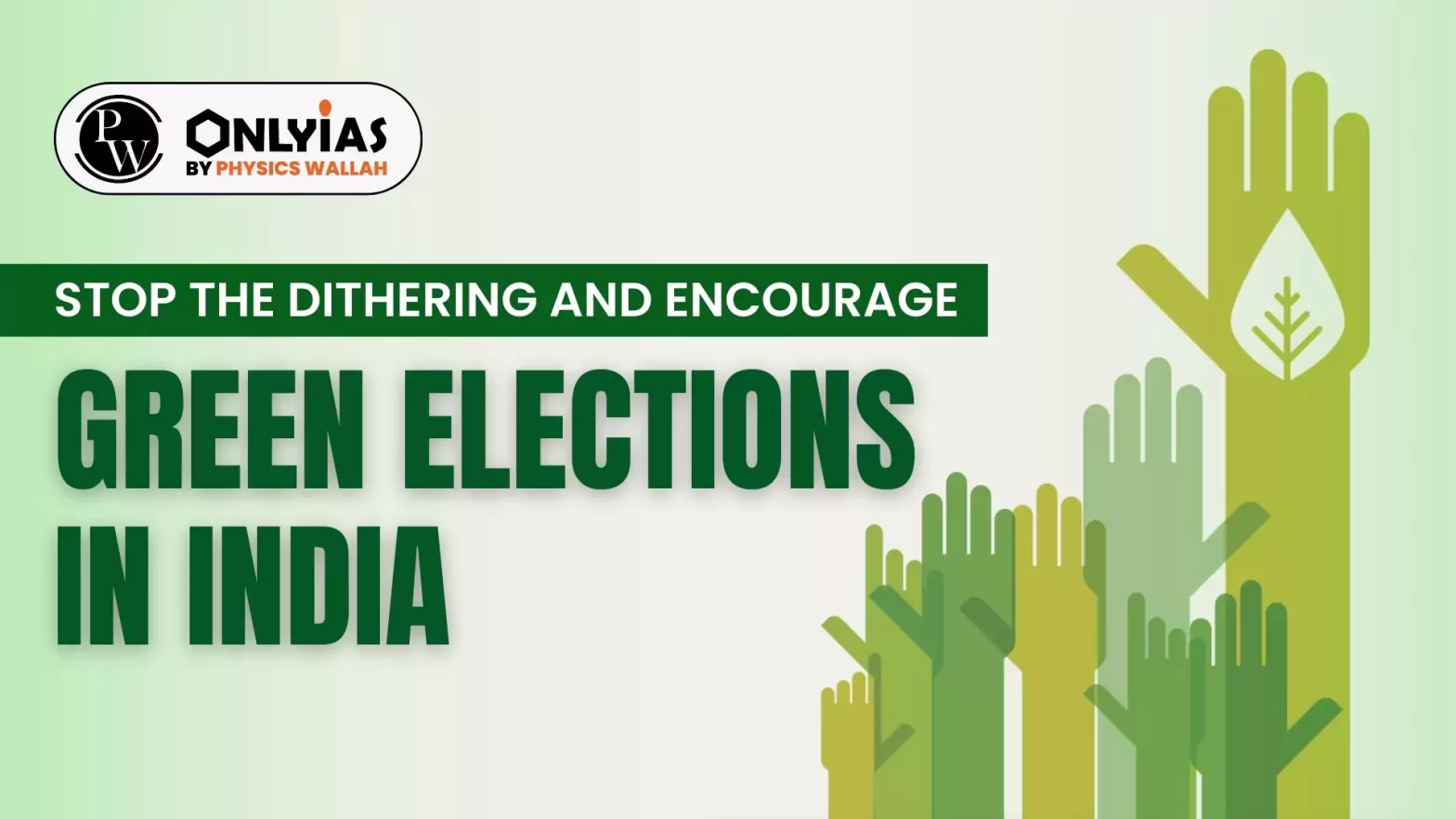Context:
This editorial is based on the news “Stop the dithering and encourage green elections in India” which was published in the Hindu. Eco-friendly elections are imperative to reduce the avoidable carbon footprint associated with every election, fostering environmental stewardship alongside civic participation.
Case study of Kerala Elections
- In the 2019 general election, Kerala State Election Commission urged political parties to avoid single-use plastic, leading to a Kerala High Court ban on flex and non-biodegradable materials in campaigning.
- Alternatives such as wall graffiti and paper posters were adopted.
Case Study of Sri Lanka
- In 2019, the Sri Lanka Podujana Peramuna (SLPP) party launched the world’s first carbon-sensitive election campaign in Sri Lanka.
- They measured and offset carbon emissions from campaign activities, including vehicles and electricity, by involving the public in tree planting in each district.
- This reduced the campaign’s carbon footprint and raised awareness about the significance of maintaining forest cover.
Case Study of Estonia
- Estonia laid the foundations for digital voting as an online voting alternative.
- This method also encouraged voter participation. The success of Estonia’s approach suggests that digital voting accompanied by robust security measures is both eco- and electorate-friendly
|
Green Elections Background
- Traditional election methods involve: Paper, energy-intensive rallies, loudspeakers, PVC flex banners, hoardings, and disposable items.
- Huge impact on environmental footprint and impact public health.
- Magnified impact: The sheer scale of India’s elections, involving crores of voters and mass political rallies, magnifies this impact.
- In August 2023, prior to Assembly elections in five States, the Election Commission of India (ECI) expressed concern about the environmental impact of non-biodegradable materials used in elections.
About Green Elections
- Green Elections entails adopting eco-friendly practices at every stage, from campaign materials to election rallies and polling booths. Successful examples: Kerala, Sri Lanka, Estonia
Need for a Paradigm Shift
- Environmental footprint of Elections is massive: In the 2016 US presidential elections, the emissions by campaign flights by just one of the candidates alone were equivalent to the carbon footprint of 500 Americans for a year.
- Preserving Natural Resources: Elections often lead to the extensive use of paper and other resources. Implementing green initiatives can help conserve natural resources and promote responsible consumption.
Challenges To Green Elections
- Infrastructure hurdles: Include
- Training new officials in shifts towards green elections.
- Putting checks and balance to prevent hacks and frauds
- Providing equitable access to new technologies to voters
- Financial challenges: include substantial upfront costs for eco- friendly materials and technology, which would deter governments that are financially constrained. Plastic is a very cheap and durable option as compared to other eco friendly materials.
- Cultural inertia: Public scepticism towards new approaches and fear of compromises to vote security are another.Therefore, ensuring transparency and effective auditing of new adaptations are crucial
Way forward
- Participation of all stakeholders: Such as political parties, Election Commissions, governments, voters, the media and civil society.
- Integration with grassroot initiatives: The success of integrating top-level directives with grassroots initiatives to foster a green transition is imperative. Political parties must take the lead.
- Mandatory Eco friendly electoral practices: The journey can begin by enacting legislation mandating eco-friendly electoral practices, with the ECI incorporating them in the Model Code of Conduct.
- Campaigning through digital platforms
- Encouraging door-to-door campaigning (reducing energy-intensive public rallies)
- Use of public transportation for election work.
- Incentivising the replacement of plastic and paper-based materials with sustainable local alternatives for polling booths, such as natural fabrics, recycled paper and compostable plastics, will aid waste management and support local artisans.
- Digital Voting: ECI can push for digital voting even though this necessitates the training and capacity building of officials. The government must educate and support voters and ensure equitable access to digital technology.
- Role of Civil society: It should act as a catalyst.
- Media: It can help in emphasising the environmental impact of conventional election methods, and turn the spotlight on innovative eco-friendly alternatives.
Conclusion
Embracing Green Elections practices can help India set an example for other democracies around the world.
Also Read: One Nation One Election
| Prelims PYQ (2021):
Consider the following statements:
1. In India, there is no law restricting the candidates from contesting in one Lok Sabha election from three constituencies.
2. In 1991 Lok Sabha Election, Shri Devi Lal contested from three Lok Sabha constituencies.
3. As per the existing rules, if a candidate contests in one Lok Sabha election from many constituencies, his/her party should bear the cost of bye -elections to the constituencies vacated by him/her in the event of him/her winning in all the constituencies.
Which of the statements given above is/are correct?
(a) 1 only
(b) 2 only
(c) 1 and 3
(d) 2 and 3
Ans: (b) |
![]() 28 Feb 2024
28 Feb 2024

